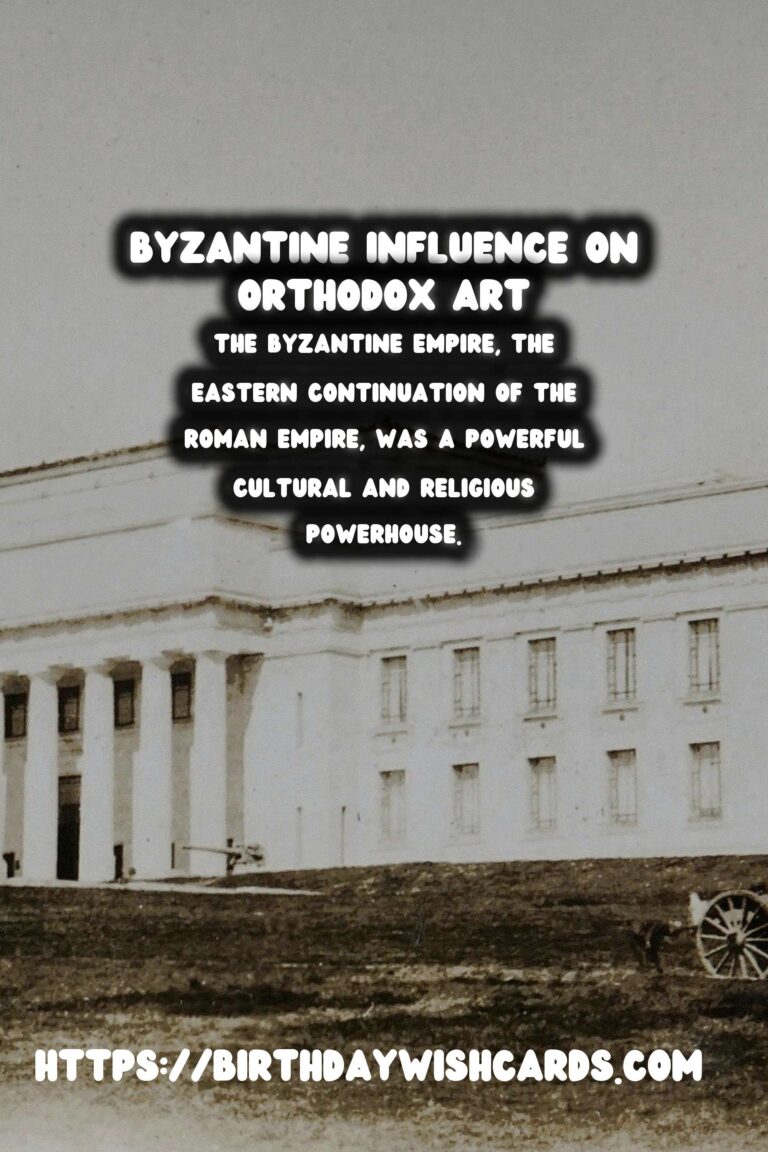
The Byzantine Empire, the eastern continuation of the Roman Empire, was a powerful cultural and religious powerhouse. Its influence on Orthodox art is indisputable, with a legacy that can still be observed in the vibrant mosaics, iconography, and architecture that define the aesthetic of the Orthodox Church.
Historical Context
The Byzantine Empire thrived for over a millennium, from approximately 330 AD, following the division of the Roman Empire, until its fall to the Ottoman Turks in 1453 AD. This period was marked by significant cultural developments and theological debates that shaped the religious and artistic expressions of the time.
The emergence of Orthodox Christianity as the state religion paved the way for art that not only glorified the divine but also communicated complex theological ideas to the faithful. As a result, art and religion became deeply intertwined in Byzantine society.
The Iconoclastic Controversy
A crucial moment in Byzantine art history was the Iconoclastic Controversy, which erupted in the 8th and 9th centuries. The debate centered around the use of religious images or icons, which some considered idolatrous. The eventual triumph of the iconodules, or proponents of icon veneration, reaffirmed the role of images in religious worship and led to a flowering of iconographic art.
Icons became central to Orthodox worship, serving as windows to the divine. They were meticulously crafted and often adorned with gold and rich colors, reflecting the heavenly glory. The particular style and symbolism developed during this time continue to influence Orthodox art today.
Architectural Impact
Byzantine architecture also left an enduring impact on Orthodox art. The Hagia Sophia in Constantinople, with its massive dome and richly adorned interiors, epitomizes Byzantine architectural achievement. Its design elements, such as the central dome and use of light, were replicated in Orthodox churches throughout Eastern Europe and Russia.
Churches were often decorated with elaborate mosaics and frescoes that portrayed biblical scenes and saints. These artistic endeavors aimed to create a heavenly atmosphere, drawing worshippers into a spiritual realm.
Mosaics and Iconography
Mosaics played a prominent role in Byzantine art, serving both decorative and didactic purposes. Crafted from small, colored glass or stone pieces, these artworks adorned church interiors, presenting religious narratives in vivid detail. The mosaics of Ravenna and those within the Hagia Sophia remain quintessential examples of this art form.
Over time, Byzantine iconography developed a specific style characterized by solemn, frontal figures with gold backgrounds. This distinct visual language was integral to the dissemination of Christian teachings across the empire and eventually to the Slavic lands.
Lasting Legacy
The influence of Byzantine art on Orthodox art is profound and long-lasting. Even after the fall of Constantinople, the artistic traditions continued to thrive in the Orthodox world. The Russian Orthodox Church, in particular, adopted and adapted Byzantine styles, fostering a renewed interest in icons and religious art.
To this day, the principles and aesthetics of Byzantine art are preserved in the art and worship practices of the Eastern Orthodox Church, ensuring its cultural and spiritual legacy endures.
Conclusion
In conclusion, the Byzantine Empire’s impact on Orthodox art is immeasurable. Through its architecture, iconography, and liturgical art, it has left a rich heritage that continues to inspire and define Orthodox artistic expression. The Byzantine artistic tradition not only celebrated religious themes but also served as a vital tool for theological education and cultural identity.
The Byzantine Empire, the eastern continuation of the Roman Empire, was a powerful cultural and religious powerhouse. To this day, the principles and aesthetics of Byzantine art are preserved in the art and worship practices of the Eastern Orthodox Church. 
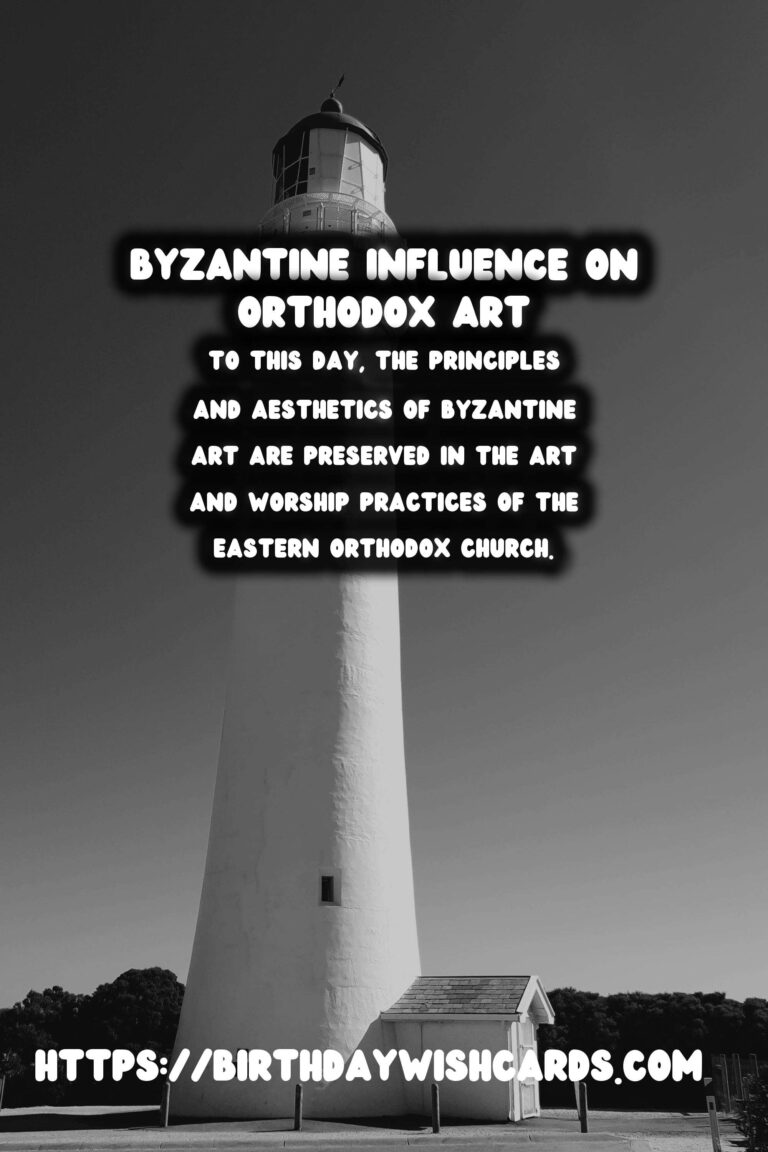
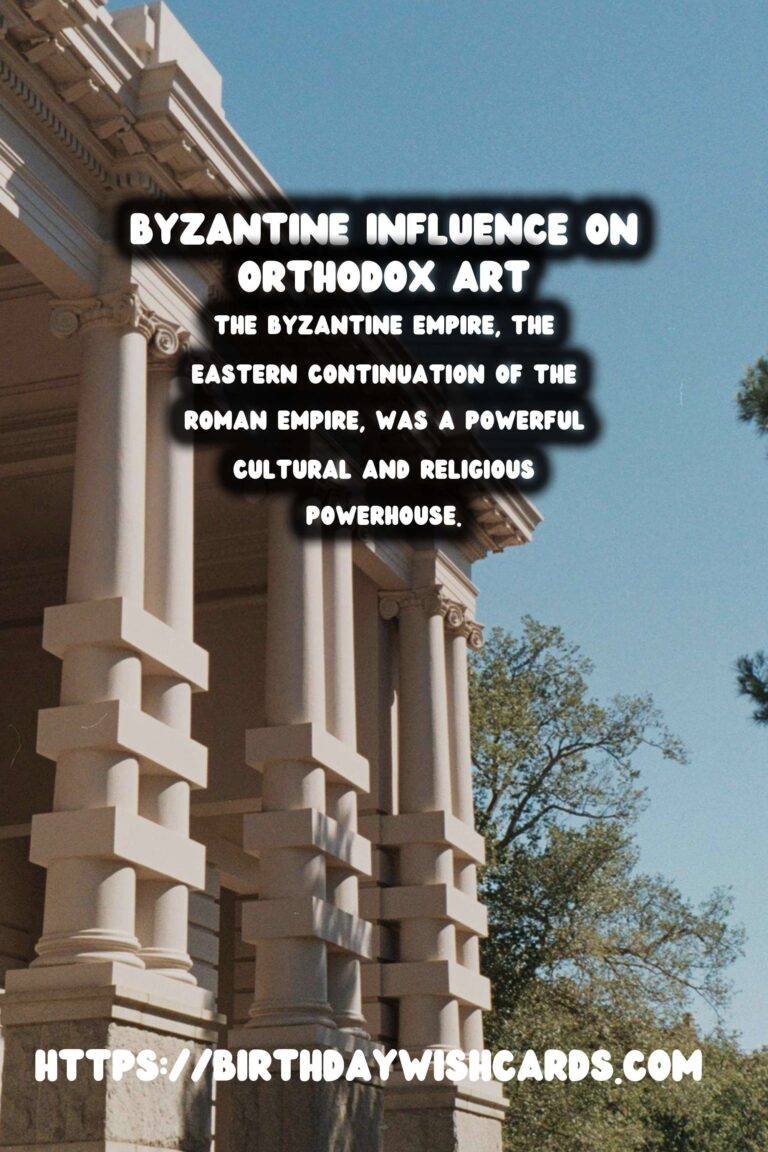
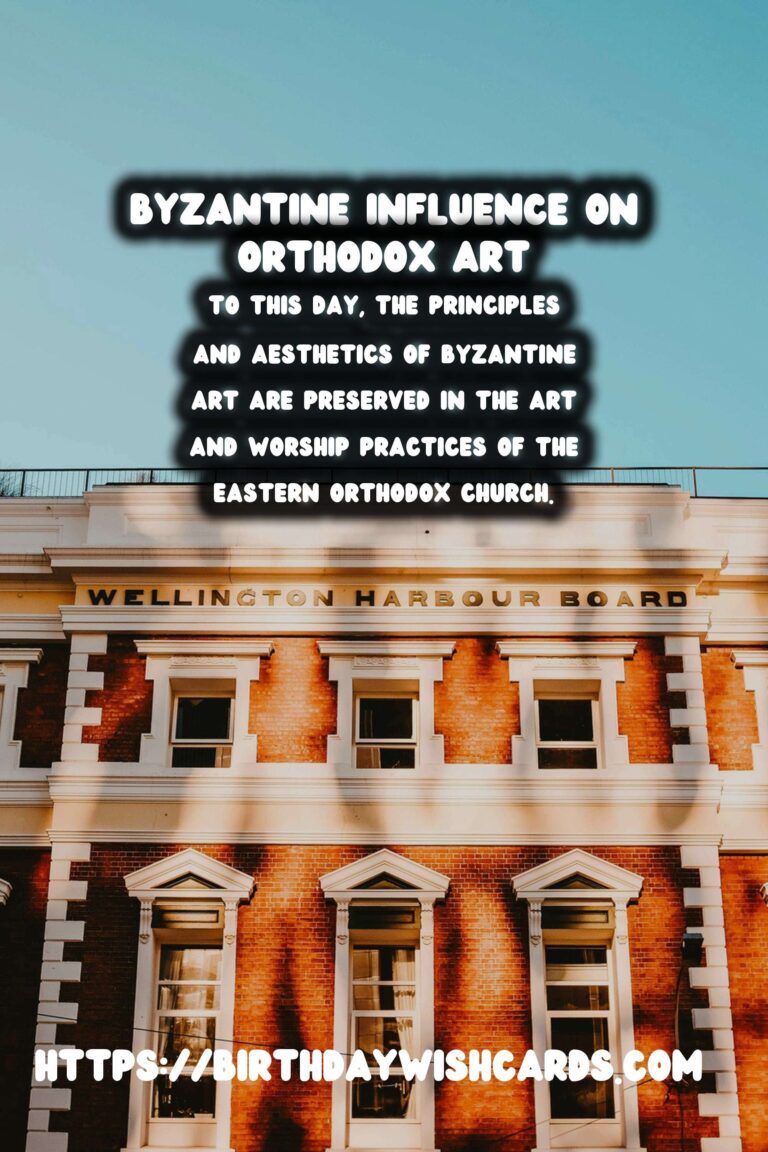
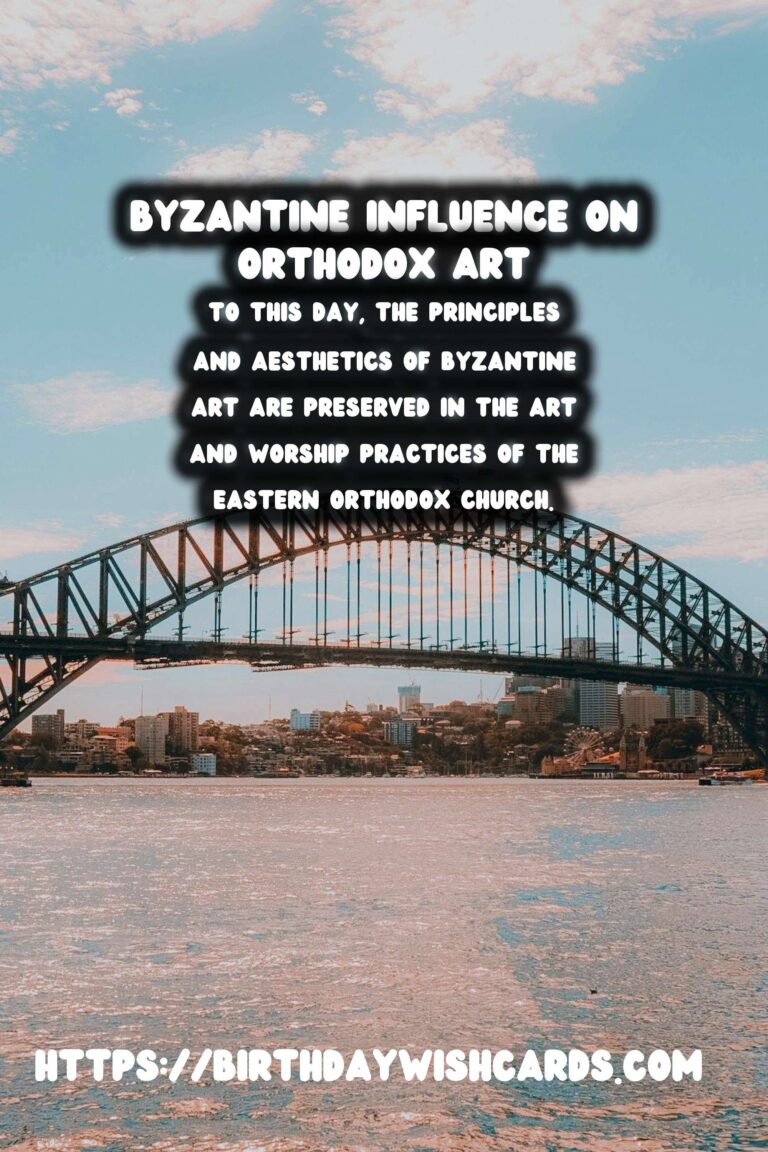
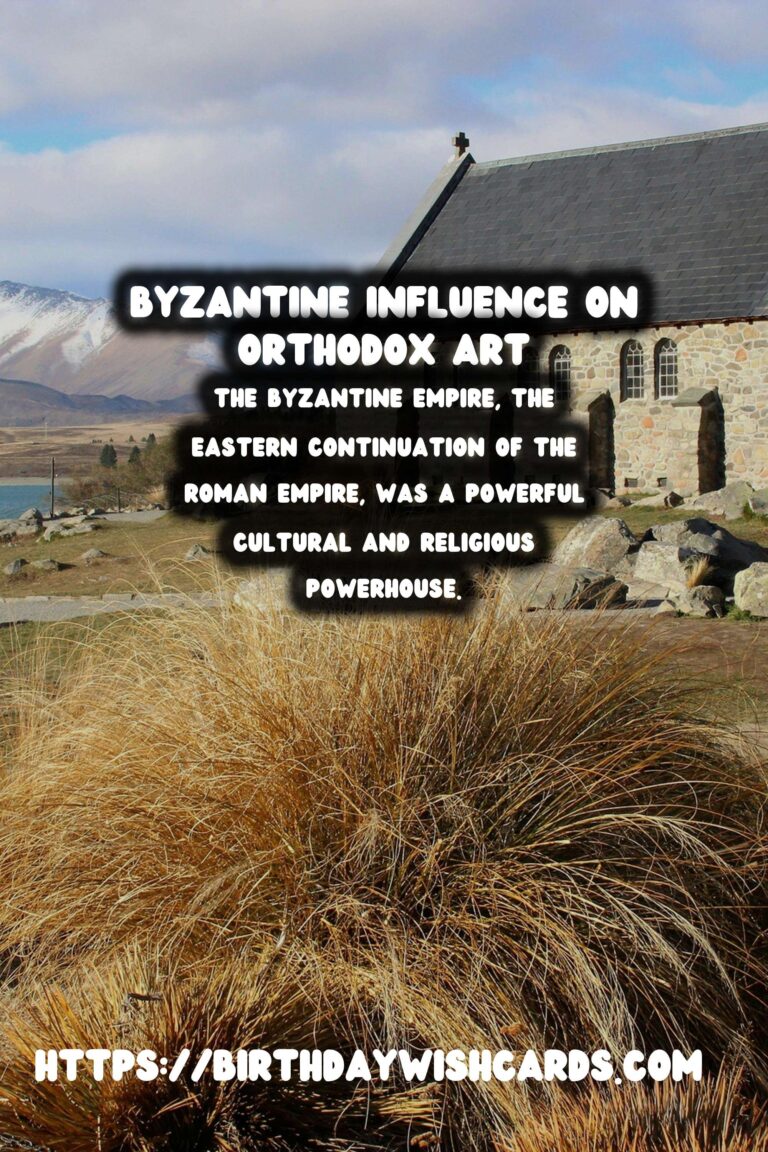
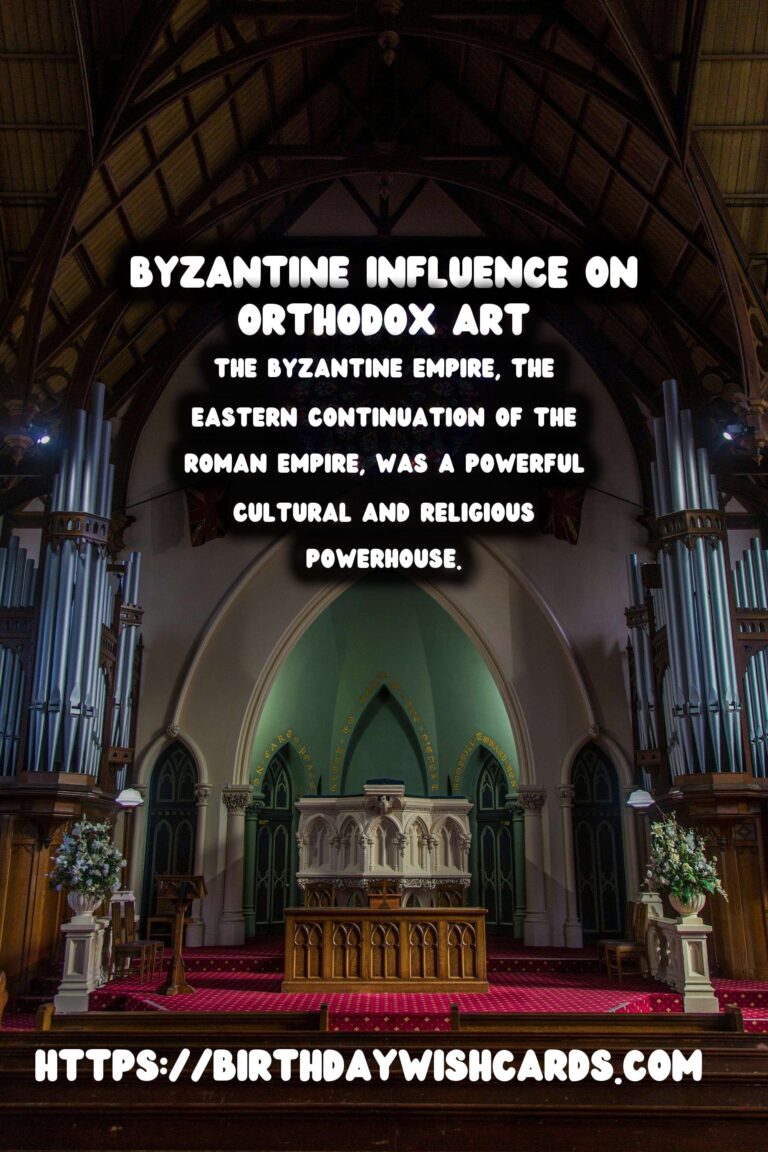
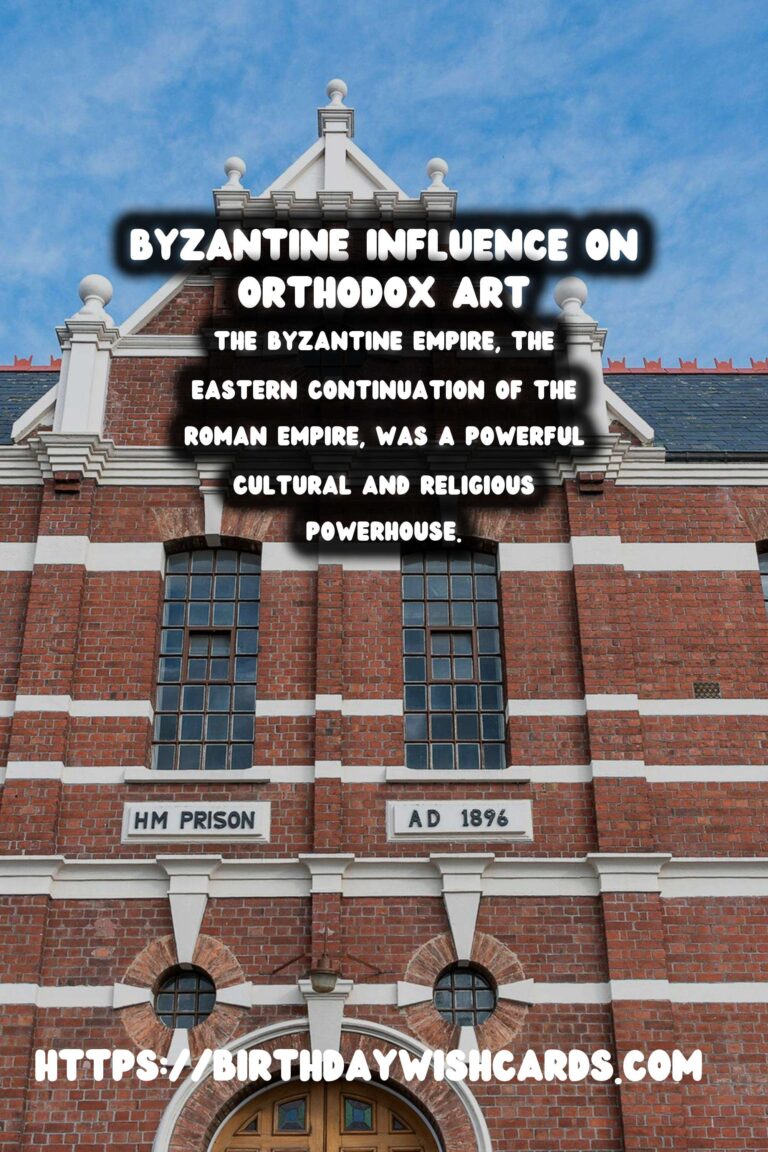
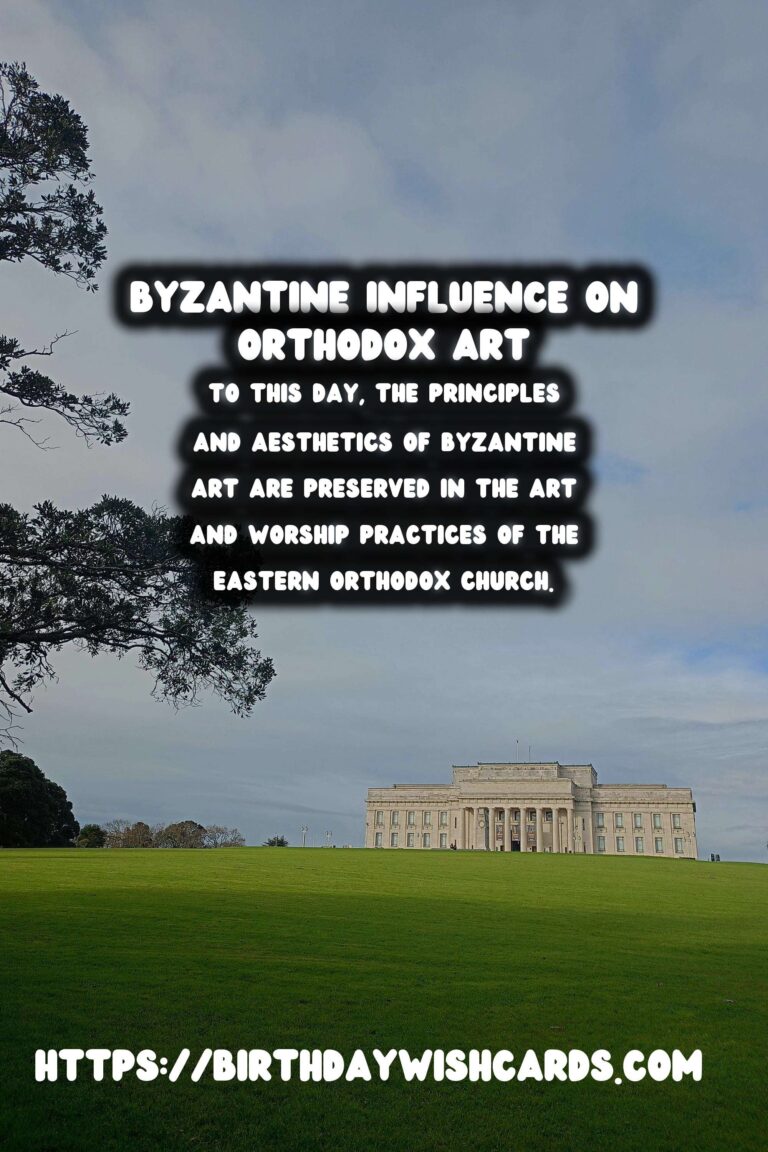
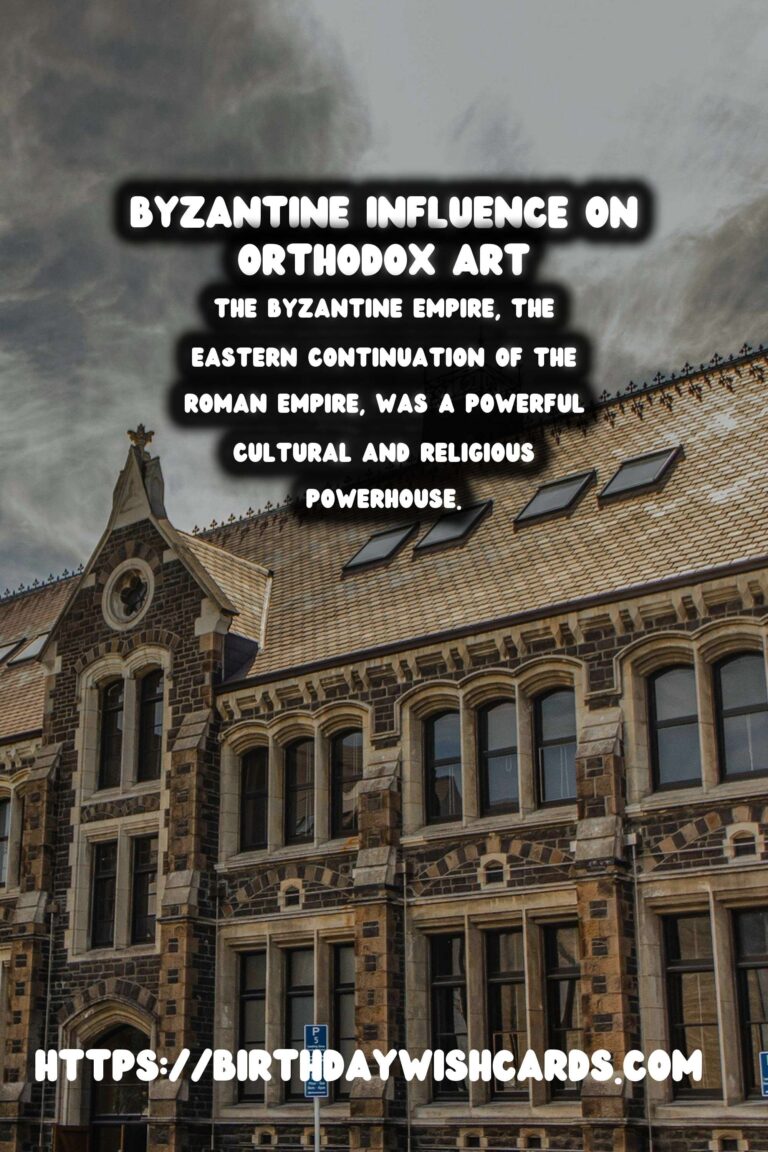
#ByzantineArt #OrthodoxHeritage




